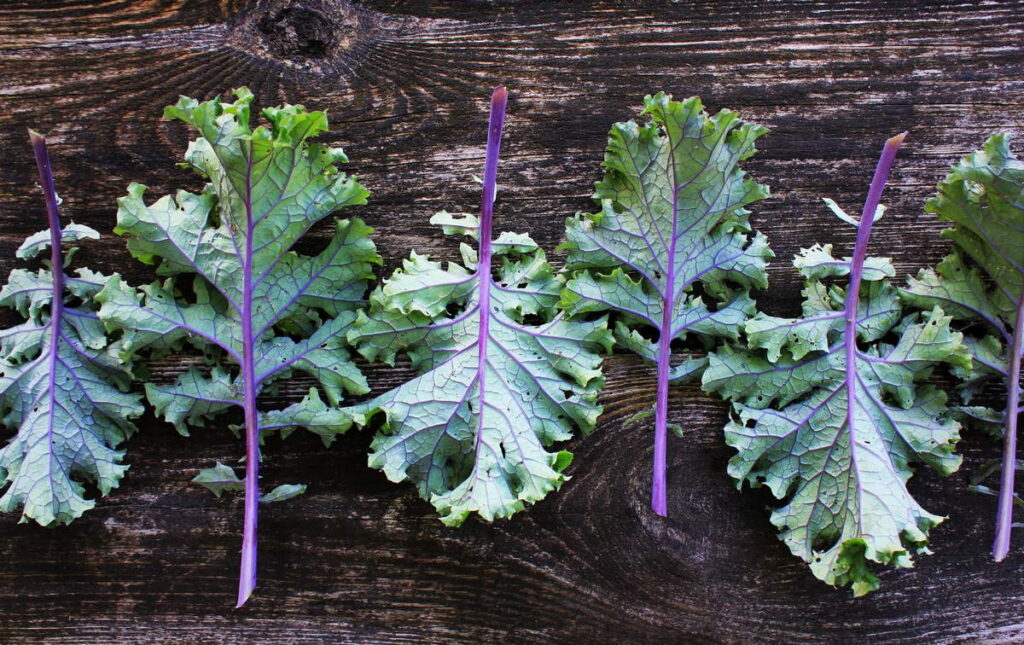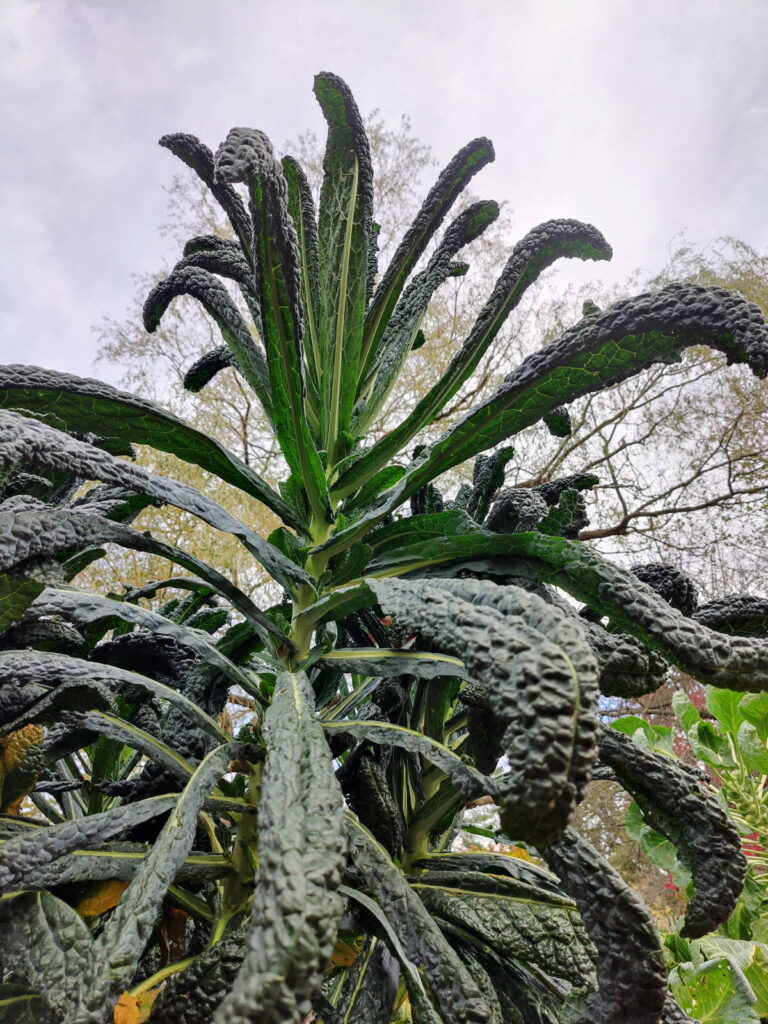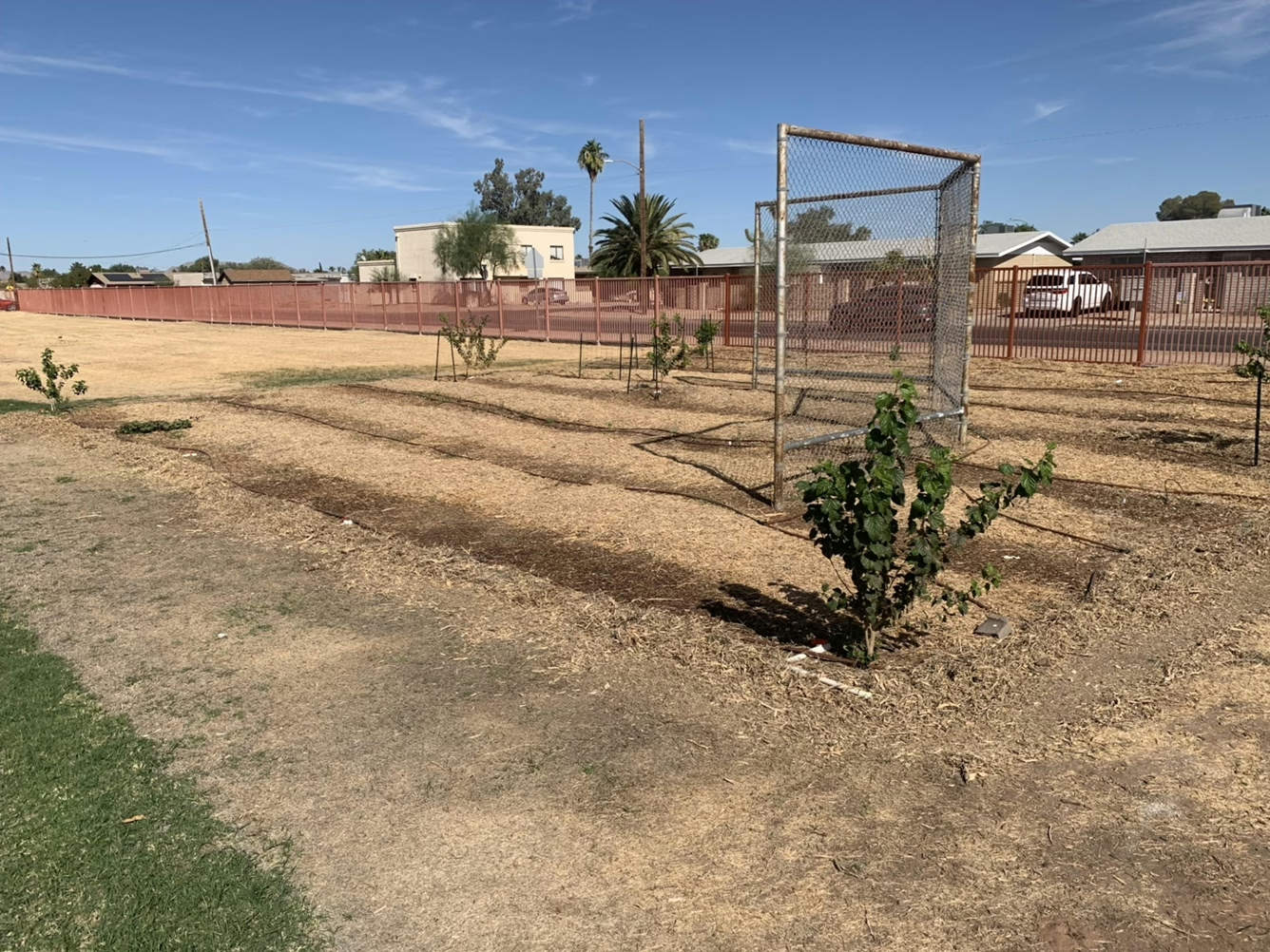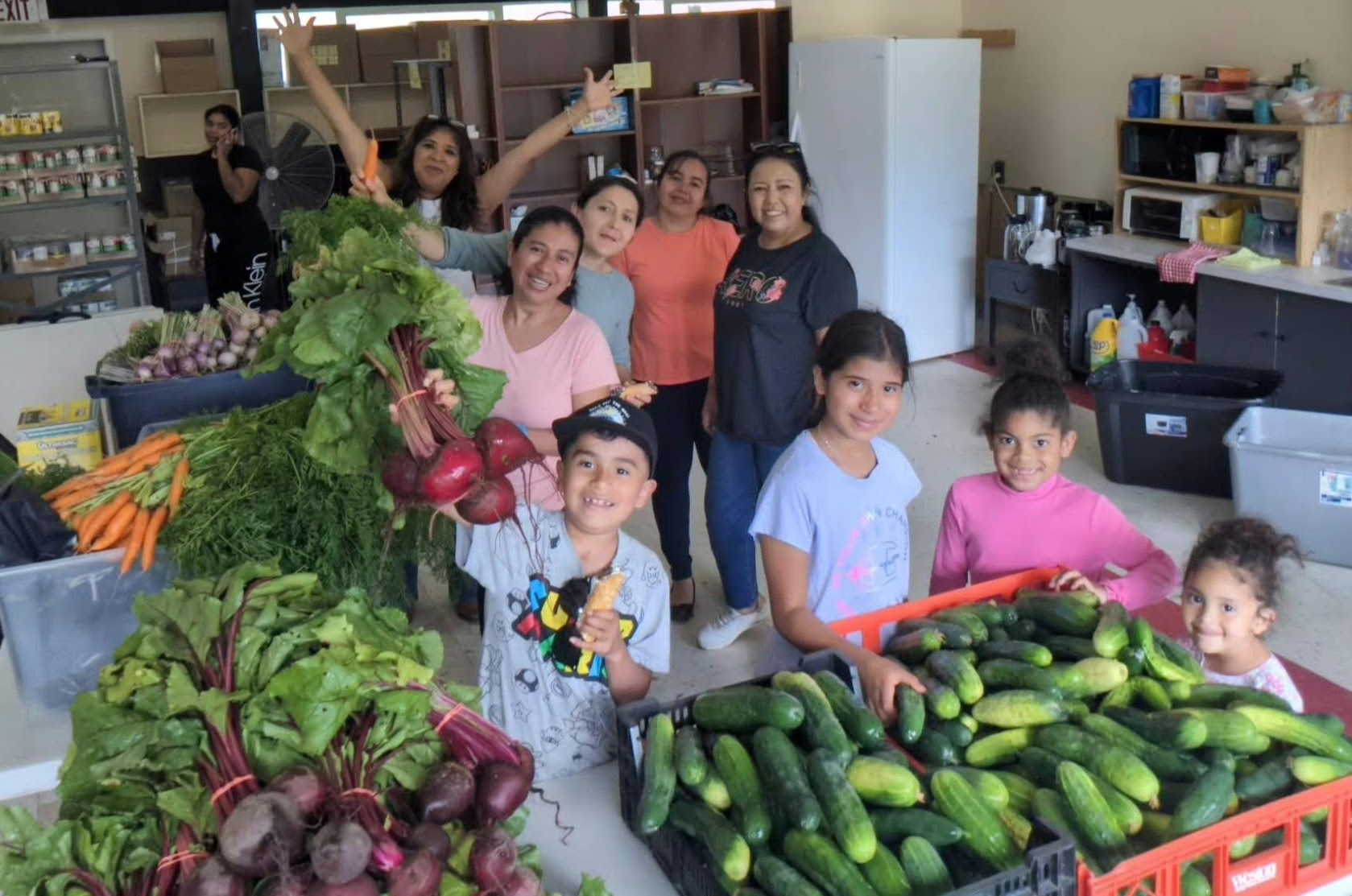Kale and I have a few things in common: we’re green at heart, thrive in cool climates and have borne the brunt of numerous food jokes. I’ve been lucky to stay close friends with a number of guys from elementary school. While none of them are particularly unhealthy in their eating habits, they look at me as the healthy eater in our friend group and occasionally razz me about it. For example, if we’re going to eat out together, they might playfully suggest that I bring my own kale in case there aren’t enough healthy options on the menu. I take it in stride which, in a way, is another trait I share with kale: we’re both pretty easygoing, or at least I’d like to think I am.
Kale is not only easygoing; it’s “easy-growing,” so much so that I took it for granted for several years. About 5 years ago, I planted Red Russian Kale which is a beautiful heirloom variety with frilly, purple-veined, blue-green leaves that resemble oak leaves. I let one plant go to seed, tossed it into the compost pile and later spread the finished compost throughout my vegetable garden and strawberry patch. The Red Russian invasion that ensued was the stuff of history books. It became my most prolific and favorite “weed” in such a way that I went years without having to buy kale seeds. I no longer had to plant kale so much as relocate it.

Last year, however, my wife and I downsized our garden and spread a very thick layer of new kale-seed-free compost on top. To my dismay, no Red Russian kale conscripts volunteered for garden duty this year. While it was sad not to have these peaceful Russians show up, it allowed me to invite some Italians into the garden to take their place. This year, I planted Lacinato kale also known as Tuscan or Dinosaur Kale. I tried it many years ago and had a decent crop, but nothing compared to this year’s bountiful harvest. Our plants tower higher than a T-Rex doing justice to their dinosaur nickname. The secrets of my success this year were the extra fertility I added to our soil and locating the kale in a sunnier part of the garden than where I normally put them. Usually, I tend to place them in the shady, back of our garden. Although I may have taken kale for granted in the past, I won’t anymore after this year’s generous harvest.







Comments are closed.